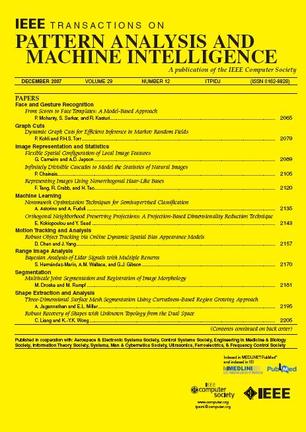Coarse-to-Fine Multi-Scene Pose Regression with Transformers
IF 20.8
1区 计算机科学
Q1 COMPUTER SCIENCE, ARTIFICIAL INTELLIGENCE
IEEE Transactions on Pattern Analysis and Machine Intelligence
Pub Date : 2023-08-22
DOI:10.48550/arXiv.2308.11783
引用次数: 0
Abstract
Absolute camera pose regressors estimate the posi-tion and orientation of a camera given the captured image alone. Typically, a convolutional backbone with a multi-layer perceptron (MLP) head is trained using images and pose labels to embed a single reference scene at a time. Recently, this scheme was extended to learn multiple scenes by replacing the MLP head with a set of fully connected layers. In this work, we propose to learn multi-scene absolute camera pose regression with Transformers, where encoders are used to aggregate activation maps with self-attention and decoders transform latent features and scenes encoding into pose predictions. This allows our model to focus on general features that are informative for localization, while em-bedding multiple scenes in parallel. We extend our previous MS-Transformer approach [1] by introducing a mixed classification-regression architecture that improves the localization accuracy. Our method is evaluated on commonly benchmark indoor and outdoor datasets and has been shown to exceed both multi-scene and state-of-the-art single-scene absolute pose regressors. We make our code publicly available from here.使用Transformers进行粗到细多场景姿势回归
绝对相机姿态回归器仅在给定捕获图像的情况下估计相机的位置和方向。通常,使用图像和姿势标签来训练具有多层感知器(MLP)头部的卷积主干,以一次嵌入单个参考场景。最近,通过用一组完全连接的层替换MLP头,该方案被扩展到学习多个场景。在这项工作中,我们建议使用Transformers学习多场景绝对相机姿势回归,其中编码器用于聚合具有自关注的激活图,解码器将潜在特征和场景编码转换为姿势预测。这使得我们的模型能够专注于为定位提供信息的一般特征,同时并行地对多个场景进行em铺垫。我们通过引入混合分类回归架构来提高定位精度,从而扩展了我们以前的MS Transformer方法[1]。我们的方法在常用的室内和室外基准数据集上进行了评估,并已证明超过了多场景和最先进的单场景绝对姿势回归器。我们从这里公开我们的代码。
本文章由计算机程序翻译,如有差异,请以英文原文为准。
求助全文
约1分钟内获得全文
求助全文
来源期刊
CiteScore
28.40
自引率
3.00%
发文量
885
审稿时长
8.5 months
期刊介绍:
The IEEE Transactions on Pattern Analysis and Machine Intelligence publishes articles on all traditional areas of computer vision and image understanding, all traditional areas of pattern analysis and recognition, and selected areas of machine intelligence, with a particular emphasis on machine learning for pattern analysis. Areas such as techniques for visual search, document and handwriting analysis, medical image analysis, video and image sequence analysis, content-based retrieval of image and video, face and gesture recognition and relevant specialized hardware and/or software architectures are also covered.

 求助内容:
求助内容: 应助结果提醒方式:
应助结果提醒方式:


